




It has been seven years since we launched our first Independent Sponsor Report. Back then, the independent sponsor sector was the “Wild West” of private equity It was a largely unchartered landscape, one without a playbook There were few benchmarks, there was little standardization of economic terms, and independent sponsors were still working hard to convince company owners and capital providers of their value .
Much has changed for the asset class since then .
We have issued five Reports since our initial one, and in each, we have shown the continued rise of the sector .
Since our initial Report, we have watched sellers and capital providers alike embrace the sector in greater numbers than ever before . We have seen more institutional investors allocating to the space, and we have seen the creation of funds specifically for independent sponsor-led transactions.
We have seen independent sponsor terms, fees, and carry become more standardized and accepted . Because of benchmarking, including through our Reports, independent sponsors now know what the market will bear
Through the years, we have watched independent sponsors navigate challenging landscapes, including the pandemic (as covered in our 2020 Independent Sponsor Special Report: Weathering the Storm), the high inflation and interest rate environment of late 2022, and the lingering economic uncertainty . In the face of those challenges, we have seen independent sponsors find success where others find adversity. We have seen them find potential where others find problems.
That’s why it is not surprising to see the returns of our independent sponsor respondents this year . Of those who have had liquidity events, 74% have generated above a 3x return Thirty percent of these have returned more than 5x to investors These returns underscore what we at Citrin Cooperman have known all along: the value of the independent sponsor asset class is undeniable .
Many things have changed since our initial Report in 2017 This year, we show what has changed and what remains the same . But above all, we show just how far the asset class has come
We look forward to seeing the continued rise of the asset class over the next seven years .

Sylvie Gadant Managing Partner Transaction Advisory Services
This is Citrin Cooperman’s fifth annual Independent Sponsor Report * This year’s report incorporates results from an online survey of independent sponsors and from interviews with leading independent sponsors and capital providers .
This year, through our online survey, 167 professionals in the independent sponsor sector shared their views on topics such as deal flow and mechanics, capital sources, deal economics, liquidity events, and industry outlook . The survey was conducted in March and April 2024, and interviews with leading independent sponsors and capital providers were conducted in June 2024
One hundred and forty-four respondents identified themselves as independent sponsors (“IS”) . Forty percent of those respondents are at firms that have been in existence for 10 years or more
Most IS firms (66%) represented in this year’s report have two or three principals, and 26% have only one principal The majority of firms (61%) have one non-principal professional staff member.
The breakdown in independent sponsor respondents’ firm longevity and staffing (principals and non-principals) has been roughly consistent in each year of our annual survey All major regions of the continental United States (U .S .) are represented by our respondent population .
Throughout this report, where illustrated, we have provided comparisons by firm longevity and/or across survey years.
“The fact that 40% of independent sponsor respondents have been in business for 10 years or more is significant. It shows that the independent sponsor model is maturing and has
gained
a lot more traction . A decade ago, that percentage would have been very small . ”

Richard Baum Managing Partner, Consumer Growth Partners

* Citrin Cooperman issued annual Independent Sponsor Reports in 2017, 2018, 2019, and 2023. In 2020, we released our Independent Sponsor Special Report: COVID-19: Weathering the Storm.
** Please note that, throughout this Report, because of rounding, figures may not equal 100%.
Do you plan on raising a fund with committed capital?

WITHIN THE NEXT 2 YEARS
NUMBER OF PLATFORM TRANSACTIONS CLOSED AS AN INDEPENDENT SPONSOR BY FIRM LONGEVITY*
NUMBER OF ADD-ON TRANSACTIONS CLOSED AS AN INDEPENDENT SPONSOR BY FIRM LONGEVITY*
* Figures refer to all transactions closed in any year of the firm’s existence.
TRANSACTIONS ANTICIPATED TO CLOSE IN THE NEXT 18 MONTHS: ALL IS RESPONDENTS
“It is very encouraging that nearly all independent sponsor respondents anticipate closing at least one platform transaction through 2025, and 82% anticipate closing at least one add-on,” said Nichol Chiarella, Partner, Citrin Cooperman . “Independent sponsors are always strategically looking for opportunities to grow their portfolio of companies through platforms or add-ons. And, because they buy smaller companies, add-ons allow a natural expansion of EBITDA.”
Most often, our independent sponsor respondents are investing in or targeting companies with an EBITDA of $2 million to under $5 million (cited by 82% of respondents) Companies with $5 million to under $10 million of EBITDA are also frequently targeted or invested in by 58% of our IS respondents (multiple responses were accepted for this question)
Over the years, our independent sponsor respondents have been pursuing larger deals . This year, that trend continues, with 42% of our IS respondents targeting deals at the highest end of the spectrum – companies with $10 million or more EBITDA
“It is not surprising that newer independent sponsors are more likely than their more experienced peers to seek out deals in the lower range of EBITDA,” explained Mr Baum . “Deals with companies with less than $2 million of EBITDA are among the hardest types of deals to get done . If the winds aren’t blowing in the right direction, $2 million of EBITDA can quickly become zero or negative, and then you need to get the company back to profitability. Many institutional investors and independent sponsors, especially seasoned ones, will shy away from deals in this range unless the deal presents something really special, like a highgrowth situation with a clear path to at least mid-single digit EBITDA .”
Historically, transactions with companies that have an EBITDA between $2 to $5 million have been the sweet spot for our independent sponsor respondents since our first report in 2017. The same holds true for respondents in 2024, with 82% of them targeting companies with an EBITDA of $2 million to under $5 million
More experienced IS firms (6 years and older) are slightly more likely (63%) than their younger peers (at 53%) to invest in companies in the $5 to $10 million EBITDA range .
Firms from both groups are about equal – at a bit over a quarter of each group – in targeting companies in the $10 to $15 million EBITDA range .
While relatively small percentages of both groups are targeting deals over $15 million, younger firms – five years old or less – are more likely (at 20%) than their older peers (at 11%) to target larger deals of this size .
“I suspect that many younger firms targeting larger deals are run by sponsors from middle-market and bulgebracket private equity firms,” explained Ms. Gadant. “These professionals are used to pursuing larger deals and have the sourcing network and experience to make these transactions happen ”
Multiple responses accepted.
This year’s findings also reveal variations in target company size based upon firm longevity. Younger firms – in this case, those that have been in existence five years or less - are more likely than their older peers (firms in existence six years or more) to invest in or target companies at the low end of the spectrum, with EBITDA less than $2 million
“As a general matter, it is not surprising that the higher the EBITDA, the smaller the percentage of independent sponsors,” noted Mr Baum “When EBITDA increases, private equity firms are a lot more interested and therefore the market is much more competitive . When it’s more competitive, independent sponsors lose some of the edge that they have in the $5 million or less range ”
“A
decade ago, independent sponsors primarily pursued deals in the $2 to $10 million range, but now we are seeing more of them pursue larger transactions, which I think speaks to the credibility of independent sponsors as buyers
.”


Multiple responses accepted.
Within the past year, the majority of IS respondents (64%) have closed transactions at multiples of 4x to under 6x EBITDA . Thirty-one percent have closed transactions at multiples of 6x to under 8x EBITDA, and nine percent have closed transactions at multiples of 8x or more Fourteen percent of all IS respondents have not closed any deals in the past year
“These multiples are very consistent with what we are seeing,” noted Grant Kornman, Partner, Align Collaborate. “When you are working on deal-by-deal economics as an independent sponsor, you are playing for the equity upside That means you are looking for fat pitches, where you can buy a good business at an attractive valuation and have the ability to potentially drive a very high multiple of invested capital ”
“Part of what has made investing with independent sponsors attractive at this time has been their ability to find deals that may be part of under-marketed processes and somewhat proprietary,” said Brian Kerr, Managing Partner, Clairemont Capital Group. “This, combined with an independent sponsor’s ability to foster a connection with the selling entrepreneur, has led, at times, to lower entry multiples .”
“As the independent sponsor market attracts more capital, I think there will be a movement up the EBITDA chain, with independent sponsors looking at companies with higher multiples,” Mr. Kerr forecasted. “But, as we start to get into higher multiples, one of the really attractive things about independent sponsor transactions – their low entry multiples – may quickly become less attractive That will be one of the challenges for the model going forward . ”
Multiple responses accepted.
“Independent sponsors enable capital providers access to lower middle-market opportunities with the potential for higher risk-adjusted returns. It is a market ripe with opportunities .”

David Fang Private Equity Investment Officer, Unity Hunt
Fifty-seven percent of respondents have had one or more liquidity events. Not surprisingly, older firms are more likely than younger firms to have had one or more liquidity events: 86% of older firms (those in existence six years or more) have had one or more liquidity events, whereas only 21% of younger firms (those in existence five years or fewer) have had any liquidity events. Twenty-one percent of older firms have had five or more liquidity events.
A small percentage of the oldest firms who responded to this survey have not yet had a liquidity event “I suspect this is because independent sponsors, unlike their private equity brethren, do not need to exit on a predetermined timeframe,” explained Ms. Gadant. “Independent sponsors can partner with patient capital, like a family office, or recapitalize a company when a private equity partner needs to exit It is one of the benefits of the independent sponsor model that you can stay invested in a company that requires a longer-term hold.”

Of those independent sponsor respondents who have had liquidity events, 74% have returned more than 3x to investors . Thirty percent of these have returned more than 5x to investors .
AVERAGE REALIZED EQUITY MULTIPLE OF THE INVESTMENT RETURNED TO INVESTORS (FOR ONLY THOSE IS RESPONDENTS WHO HAVE HAD LIQUIDITY EVENTS)
Multiple responses accepted.

30% 5X
“With 74% of respondents generating above a 3x return, that’s a really strong outcome, and it shows the independent sponsor model is working,” noted Mr. Kerr. “Capital will continue to find its way to this segment of the PE universe.”
“We are big believers in the return potential of the independent sponsor channel,” said Grant Kornman. “It is why, after a decade of being independent sponsors ourselves, we launched Align Collaborate in late 2023 to focus exclusively on investing equity behind the best independent sponsors in the space ”
“These
returns are a testament to the value of the independent sponsor asset class and its ability to rival, and, in some cases, surpass private equity returns .”
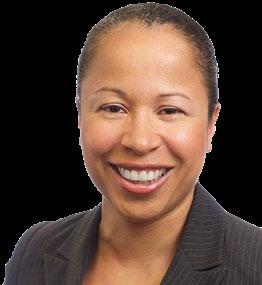

Sylvie Gadant Managing Partner, Citrin Cooperman
The top two deal sources for IS respondents are boutique investment banks and business brokers, each cited by 73% of respondents. Service providers and company owners/ management are the next most popular sources, cited by 34% and 31%, respectively . Operating executives, investment banks, and industry research/cold calling followed behind
Deal sources were mostly similar across firm longevity, but, in some cases, there were meaningful variations . Younger firms were more likely than their older peers to rely on company owners/management and industry research/cold calling as deal sources. Older firms were more likely than younger firms to rely on service providers to source deals.
“It’s not surprising that service providers are a top source of deal flow for independent sponsors,” noted Grant Kornman “Independent sponsors are often very good at building personal relationships with sellers and providing a unified vision of where a company can go post-transaction. A seller who prioritizes fit post-transaction is likely to reach out to service providers for recommendations ” MOST SIGNIFICANT SOURCES



In recent years, we have seen more examples of independent sponsor firms partnering together for particular transactions.
For the first time, we collected quantitative data about independent sponsor partnerships in this year’s survey Twenty-three percent of our respondents have partnered with another independent sponsor on a transaction, and the same percentage have considered partnering but have not partnered yet
“I think this trend will accelerate, with a lot more partnerships between and among independent sponsors in the next five years,” noted Mr. Baum.
Michael Kornman agrees. “We are definitely seeing more collaboration between independent sponsor firms than we ever have before,” he observed .
Increased bandwidth is one of the primary reasons why sponsors partner, according to respondents
“By definition, independent sponsors have limited resources and need to partner to do deals,” explained Mr . Song. “Once an independent sponsor has three to five portfolio companies, you begin to hit capacity constraints ”
“Partnerships can help solve this issue, by allowing you and another sponsor to leverage your capabilities and contacts,” he explained
In addition, partnerships can help independent sponsors bring specialized experience or expertise to a transaction
“There can be a lot of synergies in a good partnership,” said Michael Kornman. “Partners can bring different value creation abilities, different levels of deal experience, and operational or value creation experience. If you find another sponsor with complimentary skill sets, you can create a very effective partnership and perhaps derisk concerns from an investor’s perspective .”
Newer independent sponsors, in particular, may benefit from aligning with more experienced independent sponsors, not just for operational value-add and experience, but also to help increase their legitimacy with capital providers .
“Newer independent sponsors can often find attractive deals – some even proprietary, but they may lack the capital provider network necessary to get the deal done,” explained Mr Baum “Partnering with an experienced independent sponsor with a strong capital provider network can be a great option for them ”
“I think we will see significant growth in the number of collaborations between more seasoned and emerging managers . ”

Douglas Song Principal and Co-Founder, Prodos Capital LLC
“I think we will see significant growth in the number of collaborations between more seasoned and emerging managers,” added Mr Song “When you are just starting out in this business, it is essential that you develop a strong track record. You need to get your first deal or two right because that will determine your path forward ”
Interestingly, this year’s findings indicate that newer independent sponsors are less likely to have partnered on transactions than their more experienced colleagues For example, 29% of firms six years or older have partnered on at least one transaction, but only 16% of younger firms (those five years old or less) have partnered with another independent sponsor .
However, of those respondents who had not yet partnered, younger firms were more likely than their older peers to be open to the idea of partnering, with 35% of younger firms having considered a partnership, versus only 12% of older firms having considered it.
In some cases, the partnership model may have its limitations . Several capital provider contributors questioned whether the value of a potential partnership would outweigh concerns about investing with two co-sponsors.
As Bill Miltenberger, Managing Member of IBC Funds, outlined, “I can understand why two independent sponsors would partner if they have complementary skills sets and there is a strategic reason for the partnership However, from our perspective, we would be cautious about entering into a
transaction with two independent sponsors from different firms because we would wonder about how they are splitting the economics and management responsibilities ”
David Fang, Private Equity Investment Officer at family office Unity Hunt, also noted some concerns about the partnership model “Two heads can be better than one, but, from our perspective, we would probably prefer to have one lead sponsor unless a partner brings something very unique to the table .”

The top capital sources for this year’s independent sponsor respondents are family offices (cited by 53% of respondents), high net worth individuals (cited by 52%), mezzanine funds that co-invest (referred to herein as “mequity funds”) (cited by 49%), and SBIC funds (cited by 44%)
Since our 2023 Report, there have been several notable changes in the capital sources relied upon by our respondents . There has been a decreased reliance on both family offices (cited by 63% in 2023 but only 53% in 2024, though still our top source) and IS respondents’ own funds (cited by 22% of respondents in 2023 but only 15% in 2024) and an increased reliance on SBIC funds (cited by only 34% of respondents in 2023 but 44% in 2024) .
It is not surprising that family offices continue to top independent sponsors’ capital provider list, as they have in prior years of our survey, given the distinct advantages they can bring to independent sponsor transactions .
Mr. Fang underscored the benefits of working with a family office. “Family offices have a long-term orientation without a predetermined time for exit . In addition, unlike private equity funds, we are generally not competing with independent sponsors for deals or seeking performance attribution, nor do many of us want a lead or control position ”
Family offices can also bring specialized expertise or operational experience to independent sponsor transactions,
especially if those transactions are in industries in which the family has proven expertise
For example, Unity Hunt is generally industry agnostic, but, given the family’s concentration in sports and entertainment, the family office will also consider transactions in that segment, particularly if there is a strategic rationale for the investment .
Family offices may be able to provide better economics to an independent sponsor versus certain other capital sources, but they may not pay closing fees or broken deal costs
Admittedly, it may also sometimes take longer for a family office to make investment decisions, as every family office has its own idiosyncratic investment process
In light of that, Mr . Fang advises independent sponsors to thoroughly vet a family office’s investment process, including asking which and how many principals need to approve an investment, what unique diligence steps may be required for approval, and why past potential investments were turned down late in the process .

Do you use repeat funding relationships?

YES, OFTEN
N/A (E.G., HAVE NOT CLOSED ANY DEALS TO DATE OR TOO FEW TO ANSWER) 61% 21% 2% 16%
YES, BUT RARELY NO
“Many family offices have begun hiring professionals with direct PE experience to their investment teams, so they can have very institutional and straightforward processes and be as responsive as other types of capital providers,” Mr Fang noted
After family offices and high net worth individuals, “mequity” funds are the next most popular capital source for IS respondents
“In my opinion, mezz-equity funds are the most natural fit for independent sponsors for a couple of reasons,” said Mr Baum. “First, they can provide one-stop debt and equity. Second, they make a significant number of investments but are typically resource-constrained, so independent sponsors can serve as an outsourced resource for them .”
Yet some wonder whether mequity groups will remain as popular among independent sponsors going forward
“We’ve been hearing that mequity groups have less appetite for equity exposure and are not going as deep in the capital structure as they may have historically,” said Grant Kornman. “It makes sense, as demand for their creditcentric offering has increased from traditional PE-backed companies in today’s higher interest rate environment As a consequence, they tend to be investing less equity into independent sponsor-led transactions, and sponsors are looking for more pure sources of equity .”
SBICs are also a popular capital source and have been since we first started asking about them in our 2019 survey. Even in the last year, SBICs have increased in popularity among respondents, with 34% of respondents citing them as a top capital source in 2023 but 44% citing them this year .
“SBIC funds are designed to work well with independent sponsors,” emphasized Mr . Miltenberger . “We need to deploy capital, but we don’t have huge teams to source deals . Independent sponsors are like a force multiplier in that they enable us to see opportunities and actually help manage our investments, which we don’t have the bandwidth to do ”
However, SBA regulations limit SBICs from investing in larger companies Therefore, depending on the size of the company the independent sponsor is targeting, an SBIC may not be able to invest
There are some capital providers, like private equity funds, whose popularity has decreased among IS respondents since we launched our first survey in 2017. Back then, 35% of respondents cited buyout funds as a capital source, whereas, this year, only 22% did .
Although, anecdotally, many of our contributors are seeing increased investment by private equity, including buyout firms, in independent sponsor-led transactions.
“While we’ve seen increased acceptance of independent sponsors across virtually all capital sources, I think acceptance has increased most noticeably among private equity firms,” observed Mr. Sheeren.
Doug Song agrees “I think more private equity funds will continue to focus on this market because of our deal flow. It’s that simple They have a tremendous amount of capital to put to work . Independent sponsors, with our ability to source attractive deals and situations, are a great source of deal flow for private equity funds.”
However, partnerships with private equity capital can present problems, as private equity firms may seek a control position as well as carry
Beyond these traditional sources, other vehicles and investors are looking to invest in independent sponsor-led transactions .
“We are seeing funds that have been raised specifically to back independent sponsors,” noted Mr Song “We didn’t see this five or ten years ago, and I think we will continue to see more of it .”
“In addition, I think we are going to see continuation funds increasingly enter the space,” Mr Song said “Insurance companies, pension funds, and other types of nontraditional investors are coming in to recap out existing investors In times of economic uncertainty like these, especially in a sustained higher interest rate environment, an independent sponsor may need to hold a company beyond the normal three to five-year period,” Mr. Song explained. “Recapping allows that sponsor to continue the investment and generate a better outcome in the future ”
Mr. Kerr also noted the increasing number of institutional investors interested in the sector . “We now see university endowments, insurance companies, and other institutional investors considering independent sponsor-led transactions. They see the outcomes of independent sponsors and want to access those opportunities. Independent sponsor-led transactions also give these institutional investors the flexibility to make a one-off investment, without having to commit to the life of a traditional fund,” he added
As in prior years of our report, independent sponsors shoulder or share broken deal costs in most cases. Thirty-one percent of this year’s IS respondents share such costs with their equity funding source, but, for 28%, the independent sponsor fully covers the costs Nineteen percent of respondents divide up responsibilities, with the independent sponsor covering broken deal costs prior to partnering with the equity funding source and the equity funding source covering broken deal costs thereafter . For only 18% of respondents, the equity funding source fully covers broken deal costs
Assignment of responsibility for broken deal costs is a balancing act . Deal costs can quickly escalate and, if the deal goes south, those costs can cripple an independent sponsor, especially a newer one who doesn’t have substantial reserves On the other hand, a capital provider often does not want to bear the burden of costs incurred before he or she entered the transaction And yet, if the costs aren’t shared, elevated costs may create an incentive for the independent sponsor to close, even if due diligence findings become problematic.
Accordingly, many of our respondents and contributors prefer an approach that shares costs so risks are more fairly balanced between the independent sponsor and equity funding source
“Many capital providers expect independent sponsors, especially if they are more seasoned, to be more of a partner and cover their pro-rata share of broken deal costs,” advised Mr. Song . “In our case, we reserve cash in our corporate account for such situations . We want to be able to have more control and influence over a deal, so we think that means we should cover a good portion of broken deal costs,” he explained
“Each deal is a little different, but third-party costs are an area that I worry about,” said Mr Miltenberger “Our typical process is that we won’t start legal review until we are 95 to 99% there on the investment thesis and opportunity . If we think the company is pretty clean and we don’t have a lot of perceived issues on the front end, then we may cover costs,” he noted . “If the deal looks like it may be noisy, I will ask them to get a quality of earnings analysis and come back to me . ”
“Costs I can control, I will sometimes take or split, but if I can’t control the costs or I am not involved in incurring them, I won’t split them,” Mr . Miltenberger warned .
As a general matter, certain types of capital providers are more likely to share or absorb costs
“Historically, equity capital providers have been less willing to absorb broken deal costs, whereas debt-centered providers are more willing to absorb them,” explained Michael Kornman. “We are one of the few equity groups that will shoulder a portion of those broken deal costs as we think it leads to the best alignment and decision-making.”
“We have historically partnered with mezzanine and equity funds for whom broken deal costs aren’t really an issue,” said Mr . Sheeren . “But with other transactions, we have partnered with sources that are not accustomed to covering these costs In these cases, we have to negotiate and may end up splitting costs 50/50.”
When independent sponsors pay for broken deal costs (versus having their equity funding source cover them), 36% of IS respondents pay with their own funds For 35% of respondents, service providers give the independent sponsor a discount on fees to help ease the burden .
DO YOU PAY FOR YOUR SHARE?

Seventy-three percent of IS respondents are always required to contribute equity by their capital providers . This percentage has increased since our 2019 Report when only 61% were always required to contribute equity
According to this year’s survey, when independent sponsors contribute capital, 81% contribute their own funds and 61% roll their closing fees into equity These two areas have significantly increased since our 2019 survey (when we first asked this question), when just 49% contributed their own funds and only 40% rolled their closing fees into equity .
When this year’s IS respondents roll their closing fee into equity, 38% always fully roll that fee, which is a considerable increase from our 2019 Report, when only 26% fully rolled their fee .
Typical equity participation on the closing date is two to five percent for the largest percentage of IS respondents (41%) this year. This percentage has increased since 2018, when we first asked this question, when 27% used this formulation .
The timing of when sponsors’ equity vests has been roughly similar since 2019 when we first asked this question, with the majority of respondents’ equity vesting 100% at close .
“Alignment of interests is a critical feature of the independent sponsor model and one of the reasons why we believe it works so well . ”

Michael Kornman Partner, Align Collaborate
WHAT IS YOUR FIRM’S TYPICAL EQUITY PARTICIPATION ON THE CLOSING DATE?
Like the assignment of responsibility for broken deal costs, equity contributions involve an alignment of interests between independent sponsors and capital providers
“Independent sponsors need to be able to keep their lights on, and, if they have to roll a substantial portion or all of their closing fees into equity, it may be harder for them to sustain their day-to-day operations,” said Mr. Baum.
Mr Sheeren agreed with the sentiment “Independent sponsors have a right to take some of their closing fee,” he advised . “They’ve been covering their overhead and often need to use a portion of their fee to cover costs In our case, we will roll a good portion of the fee to show our belief in the deal and put our money into a company we believe in . ”
“We love it when independent sponsors are investing a meaningful amount of capital,” said Michael Kornman. “It can be rolling a portion of their fee, aggregating equity from close relationships, or it can be contributing a significant personal equity check It’s always a good signal when an independent sponsor contributes personal capital or capital from friends and family ”
“We want our independent sponsor partners to have skin in the game, which can be a combination of their own capital and friends-and-family capital,” stated Mr. Miltenberger. “If we really like the transaction and this is a first-time sponsor, we may allow them to roll their fee but then we make sure we have sufficient protections in the document.”

More experienced independent sponsors are less likely than their younger colleagues to contribute equity and to roll their closing fee into equity.

When we launched our first Independent Sponsor Report in 2017, there was little standardization in the three components of independent sponsor compensation: closing fees, management fees, and carried interest Back then, IS fees and carry were often questioned and subject to significant pushback from capital providers . That is why, in our 2018 survey, we began asking detailed questions about these three areas, with the goal of providing benchmarks so that all parties – independent sponsors and capital providers alike –would know what the market would bear .
Now, seven years since our initial Report, the three components of IS compensation are significantly more standardized and accepted
Given this, it is not surprising that 53% of our IS respondents who have been in business three years or more believe it is easier to negotiate deal economics with capital providers now, versus three to five years ago.
Many noted the importance of increasing standardization, helped by “more benchmarking” around fees and economics than ever before There is “greater acceptance of the IS model and economics,” as one respondent noted . Another said, “Capital providers know what the structure is and agree to it up front” and are more open to closing fees
“I definitely think there has been more standardization and more market-based terms in the past three to five years,” Mr.
Miltenberger stated . “If you go even farther back, say 10 or 15 years ago, it was a totally different world. The evolution of the space since then has made it much more lucrative to be an independent sponsor ”
Mr . Sheeren agreed but noted an important caveat, “The range of options in terms of economics is now much narrower, but economics remain the most negotiated piece of independent sponsor transactions ”
Throughout the years of our Reports, closing fees have emerged as the most settled area of independent sponsor economics, with the most common closing fee range between $251,000 to $500,000 Management fees have become more settled according to our findings, both in terms of how the fees are formulated and the overall amount charged Carried interest, historically the wild card of IS compensation, remains that way this year, although standardization among several components (such as minimum and maximum carried interest rates, typical hurdle rates and use of catch-up provisions) has emerged over the years
In addition, data from both our 2022 survey (published in our 2023 Report) and this year’s survey seem to suggest increasing standardization in many components of fees and carry, just in the past two years
“The independent sponsor sector is no longer as much of the “Wild West” as it once was . Now, helped by benchmarking and more institutional capital flowing to independent sponsor-led transactions, economics have become more standardized and independent sponsors know more about how to price their deals . ”
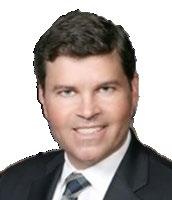
Brian Kerr Managing Partner, Clairemont Capital Group
Closing fees are most often a percentage of transaction value, according to 79% of respondents The percentage of IS respondents using this closing fee model has steadily increased since 2018 when we first asked this question. Then, only 57% of respondents used this approach .
When closing fees are a percentage of transaction value for respondents, fees are typically two percent of enterprise value (cited by 61% of this year’s respondents)
As in prior years, IS respondents most often receive a closing fee between $251,000 and $500,000 (cited by 46% of this year’s respondents) This year, a quarter of respondents received a closing fee of over $500,000, which represents a considerable increase since 2017 (when we first asked this question) when only 10% of respondents received a fee over $500,000 This year’s distribution of closing fee dollar amounts is similar to the distribution outlined in our 2023 Report .
“The increase in closing fees at the top end of the spectrum is not surprising given that, as identified in our 2023 Report, our independent sponsor respondents have been investing in companies with greater EBITDA than in earlier years of our Report,” said Ms Chiarella
* For the most part, the closing fees breakdown did not change significantly between our 2018 and 2023 Reports, so those years are not included here. The one exception was for closing fees of greater than $500,000 which jumped meaningfully, to 27% in 2023, and which remain high in this year’s Report.
Since our 2018 survey, when we first asked about management fees, the largest percentage of IS respondents (this year, 49%) continue to calculate their management fees as a percentage of EBITDA with a floor and a cap.
For respondents who use EBITDA to calculate management fees, 62% of them typically use 5% of EBIDTA That percentage is up from 2019 (the first time we asked this specific question), when only 49% of respondents used 5% of EBITDA for their calculation .
As a dollar amount, 52% of IS respondents charge management fees of $251,000 to $500,000 The percentage charging this amount has increased since our 2018 Report, with a leveling off in 2023 and 2024.

LESS THAN OR EQUAL TO $100,000
$101,000 TO $250,000
$251,000 TO $500,000
NOT APPLICABLE
DO YOU CHARGE A FEE TO YOUR CAPITAL PROVIDERS TO COVER INCOME TAX AND K1- PREPARATION COSTS?
For those respondents who charge a fee to their capital providers to cover these costs, most said the costs are paid by the portfolio company.
As in prior years of our Reports, carried interest is the area of IS compensation with the greatest variability Many factors influence carried interest arrangements such as the independent sponsor, their capital providers, and the nature of the deal itself Even still, through our Reports, we have sought to quantify carried interest arrangements, with the goal of providing benchmarking in this important area While variability remains, certain similarities and trends have emerged .
Each year that we have asked about minimum carried interest (starting in 2019), the rates have been roughly similar, with ranges of 10% to 14 9% and 20% to 24 9% the most common
Maximum carried interest rates have also been roughly similar each year of our survey, but we have seen some movement at the higher ranges For example, in 2019, 37% of respondents could earn 25% or more, whereas in 2024, 45% of respondents could earn the same .
In terms of what basis is used as a hurdle, the largest percentage of respondents (38%) use a Multiple on Invested Capital (MOIC) hurdle this year, which is a change from 2019 when the largest percentage of respondents (40%) used an IRR hurdle .
The typical hurdle rate before carried interest kicks in is 8 to 9 9%, according to 54% of respondents This has been the most common hurdle rate since our 2019 Report .
The use of catch-up provisions has also been roughly consistent since 2019, but there has been an increase in those using full catch ups, up from 61% in 2019 to 71% this year and a corresponding decrease in those who don’t use catchups (from 22% not using them in 2019 to 13% not using them this year)
* Though our first Independent Sponsor Report was launched in 2017, some questions did not launch until subsequent years of the Report. Also, our 2023 Report was based on a survey from Q4 2022.
* Though our first Independent Sponsor Report was launched in 2017, some questions did not launch until subsequent years of the Report. Also, our 2023 Report was based on a survey from Q4 2022.
“The range of options in terms of economics is now much more narrow, but economics remain the most negotiated piece of independent sponsor transactions . ” Christopher Sheeren Partner, Longhouse Partners, LLC

To aid in benchmarking, this year we asked respondents to quantify their most typical carried interest structures .
RESPONDENTS USING MOIC-BASED HURDLES: TYPICAL CARRIED INTEREST FORMULAS (MULTIPLE RESPONSES ALLOWED)
10% after 1-2x MOIC, 15% after 2-3x MOIC, 20% 3-4x MOIC, 25% above 4x MOIC
after 1-2x MOIC, 25% after 3x MOIC
after 1-2x MOIC, 20% after 2x MOIC
after 1-2x MOIC
after 1-2x MOIC
RESPONDENTS USING IRR-BASED HURDLES: TYPICAL CARRIED INTEREST FORMULAS (MULTIPLE RESPONSES ALLOWED)
after 8-10% preferred return, 15% after 15% IRR, 20% after 20% IRR, 25% after 25% IRR
after 8-10% preferred return, 20% after 20% IRR
RESPONDENTS USING A COMBINATION OF IRR AND MOIC HURDLES: TYPICAL
Formula Percentage of combination IRR and MOIC-based respondents Using Formula 10% after 8-10% preferred return, 20% after 2-3x MOIC
10% after 8-10% preferred return, 15% after 2x MOIC,
after 8-10% preferred return, 20% after 2x MOIC,
after 2-3x MOIC
after 8-10% preferred return, 30% after 2-3x MOIC
after 8-10% preferred return, 30% after 2-3x MOIC
Carry formulas are influenced by a variety of factors, such as the deal and capital provider .
“If you have an institutional investor, they will typically ask for a hurdle and likely a combined IRR and MOIC formula,” advised Mr . Song “However, if you are dealing with high net worth individuals or family offices, you may be able to get 30% carry with an IRR model . ”
“For newer independent sponsors, SBICs and family offices are pretty market-friendly capital partners with known market rates, whereas partnerships with private equity firms often entail much more complicated carry formulas,” Mr Song added . “Because their investors won’t agree to double carry, private equity firms can’t just give you 20% after an eight percent return ”
“Sometimes we see debt-equity players give up some of their economics in the carry because they are paid in other ways,” said Mr Fang “But for me, I’m only investing in the equity, and so I need to have a reasonable carry structure . Our goal is to align interests through reasonable economics ”
“Sourcing great investment opportunities and building valuable companies is not easy,” noted Grant Kornman. “It is a full-contact sport where good independent sponsors roll up their sleeves and put in the work to drive great outcomes and earn their performance-oriented economics ”
Over the next three to five years, most of our respondents expect that independent sponsor economics will become more standardized
Several respondents expect to see increased equity participation from independent sponsors . As one respondent believed, there will be “more equity participation and incentive alignment [and] less deal fees ”
There were differing opinions among our respondents and contributors over whether economics would improve or worsen for independent sponsors .
“I think the bid-ask spread has tightened as the market has gotten more robust,” observed Mr Fang “But it has been harder to raise capital over the last couple of years, and therefore I think the pendulum is swinging back slightly to capital providers, though there is still a surfeit of capital out there . ”
“I think on balance, independent sponsor economics are trending downward a bit,” added Mr Sheeren “More private equity firms and LPs are sensitive to the double carry effect. I think it is the nature of the maturation of the space that there will be downward pressure over time .”
Mr Baum takes the opposite view “If market conditions worsen, independent sponsor economics could actually get better because it will be harder for everyone to get a deal done, and there may be a premium for proprietary independent sponsor-led transactions relative to private equity-led transactions,” he said. “Private equity firms will continue to have to put capital to work regardless of market conditions which means they may be more likely to overpay for a deal Independent sponsors don’t have that same pressure ”

Over the next 18 months, respondents are mixed in their outlook for the industry Many are concerned about the high interest rate environment and its continued impact on valuations, exits, and financing.
“Interest rates will weigh on valuations and exits, giving an edge to sponsors who have more stable funding and who are not forced sellers in the next 24 months,” noted one respondent .
Looking forward, some respondents are hopeful that when interest rates are cut in September, deal flow will increase and valuations will become more reasonable. Thirty-one percent of respondents believe target company valuations will become more attractive for independent sponsors over the next 18 months .
“I believe the industry will move towards a buyers’ market from a sellers’ market that likely peaked in 2021/2022,” said one respondent
Even if rates are not cut to the extent expected, several respondents still foresee better valuations in the months ahead, and, as one noted, “More target companies [will be] for sale as owners realize that they can’t wait for interest rates to fall significantly.”
Some, however, are not as hopeful . Eighteen percent of respondents believe target company valuations will be less attractive for independent sponsors, and 51% believe valuations will remain about the same
“Continued uncertainty will lead to a dearth of deal flow activity compared to 2022,” one respondent warned .
Mr. Song also noted the deleterious effects of elevated interest rates “I think they will remain higher for 18 months to two years, even if we do get some relief through rate cuts,” he posited “In this environment, you need to find companies that won’t be whacked by some macro event, which is hard to predict, and it is hard to find those companies. We are seeing pressures from labor, inflationary, supply chain, demand, and potentially trade I think that will continue to make it harder to find deals.”
Mr. Fang agrees that the landscape will remain difficult. “I think it is going to be a more challenging environment going forward than the last 10 to 15 years, partly because the interest rate environment has changed dramatically,” he stated “We all need to be a bit more realistic in our underwriting. I also think there will be more of a flight to quality with private investments in general ”
However, as many agreed, such challenging times are when independent sponsors can outperform They have no pressure to deploy, no predetermined time to exit and they excel at finding overlooked opportunities.
One respondent noted, “There will be continued growth in the independent sponsor universe as … independent sponsors continue to unlock hidden value using creativity and persistence ”
“If you are a capital provider and you are not partnering with independent sponsors, I think you are missing a significant part of the market.”

Bill Miltenberger Managing Member, IBC Funds
“I believe the independent sponsor asset class has a lot of momentum and will continue to increase in popularity,” stated Mr. Kerr. “There is real value in having a smaller portfolio led by an independent sponsor who has the time and focus to make sure their investments are successful ”
In addition, independent sponsors will likely benefit from demographic trends when baby-boomer company owners retire .
“The baby boomer generation is transferring $90 trillion to younger generations, and they control and own the majority of non-public companies in the $3-5 million range,” stated Mr . Song . “They are going to age out within 10 years and are going to need to transfer, and independent sponsors are well-poised to take advantage of that I’m very excited about the next 10 years for our sector ”
We are excited to see what the next five years will bring for the independent sponsor asset class . We at Citrin Cooperman, like our respondents and contributors, are optimistic about the path ahead .
Citrin Cooperman is one of the nation’s largest professional services firms. Since 1979, we’ve steadily built our business by helping middle market companies and high net worth individuals find practical, actionable solutions to help them meet their short-term needs and long-term objectives. Our clients span a diverse array of industry and business sectors and find sustainable growth through utilizing our menu of comprehensive personal and professional services .
Citrin Cooperman & Company, LLP, a licensed independent CPA firm that provides attest services and Citrin Cooperman Advisors LLC, which provides business advisory and non-attest services, operate as an alternative practice structure in accordance with the AICPA’s Code of Professional Conduct and applicable law, regulations, and professional standards .
For more information, please visit citrincooperman .com .
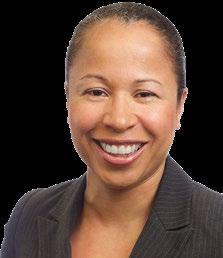
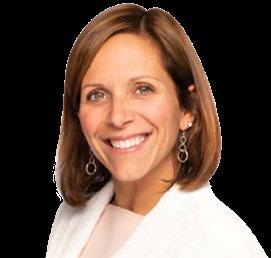
Sylvie Gadant, Managing Partner, Citrin Cooperman | sgadant@citrincooperman.com
Sylvie Gadant is the managing partner of the Transaction Advisory Services Practice and a partner within the firm’s Private Equity and Capital Markets Practice. She leads buy-side and sell-side due diligence engagements for private equity firms, independent sponsors, family offices, and strategic buyers.
Nichol Chiarella, Partner, Citrin Cooperman | nchiarella@citrincooperman.com
Nichol Chiarella is the firm’s Tax Mergers and Acquisitions Practice Leader and has two decades of experience in public accounting. She provides high-level tax planning and consulting services related to buy-side, sell-side, and restructuring transactions involving private equity firms, closely-held businesses, business owners, and high net worth individuals.

Richard Baum, Managing Partner, Consumer Growth Partners | rbaum@consumergrowth.com
Richard Baum co-founded Consumer Growth Partners in 2005 as a private equity investment and advisory firm with an exclusive focus on middle-market specialty retail and non-perishable branded consumer products companies. He also is a Partner in the advisory firm Founder Solutions that provides a broad range of strategic and operational advisory services to consumer/retail companies that have a transaction in their future but for a variety of reasons may not be ready to take in equity capital at the present time Learn more at: www.consumergrowth.com and www.founder-solutions.com



Brian Kerr, Managing Partner, Clairemont Capital Group | bkerr@clairemontcapital.com
Brian Kerr founded Clairemont Capital Group, a lower-middle market private investment firm in 2015. Brian has spent over 25 years working with lower-middle market corporations and entrepreneurs on financial and strategic projects, including balance sheet recapitalizations, debt and equity alternatives, leveraged buyouts, and mergers and acquisitions . Brian was previously with Orix Private Equity Solutions, Cornerstone Capital Holdings, and Penn Mezzanine. Learn more at: https://clairemontcapital.com
Christopher Sheeren, Partner, Longhouse Partners, LLC | chris@longhousepartners.com
Chris Sheeren co-founded Longhouse Partners, a private equity firm based in Detroit, Michigan in 2018. Chris has over 30 years of business experience in mergers and acquisitions, turnaround consulting, public accounting, and sales He has worked with Huron Capital, Conway McKenzie, PricewaterhouseCoopers, and Revlon. He has a B.A. in English and Speech Communications from the University of Nebraska, and an M B .A . from the University of Michigan, and is a former CPA . Learn more at: www longhousepartners com
Douglas Song, Principal and Co-Founder, Prodos Capital LLC | dsong@prodoscapital.com
Doug Song has a diverse background with over 30 years in principal investments, investment banking, and operational experience Prior to co-founding Prodos Capital, he was the head of investments and corporate finance for Verus International, a boutique merchant banking firm that was co-founded by Citigroup, where he led investments in both private and public companies in the emerging growth and middle market . Learn more at: www prodoscapital .com



David Fang, Private Equity Investment Officer, Unity Hunt | dfang@unityhunt.com
David Fang leads private equity investing for Unity Hunt, a privately held wealth management company that was established to oversee the holdings of the Lamar Hunt family He deploys capital by partnering with independent sponsors, funds, and other family offices. Prior to joining Unity Hunt in January 2021, David spent a decade as a managing director with the private equity solutions team of ORIX Corporation USA .
Grant Kornman, Partner, Align Collaborate | gkornman@aligncollaborate.com
Grant Kornman is a partner at Align Collaborate and a member of its investment committee. Align Collaborate provides flexible equity capital designed exclusively for independent sponsors. Prior to Align Collaborate, Grant co-founded NCK Capital (NCK), a boutique independent sponsor that acquired controlling interests in lower-middle market companies, with his brother and business partner, Michael Kornman. Learn more at: https://aligncollaborate.com
Michael Kornman, Partner, Align Collaborate | mkornman@aligncollaborate.com
Michael is a partner at Align Collaborate and a member of its investment committee Prior to Align Collaborate, Michael co-founded NCK Capital (NCK), a boutique independent sponsor that acquired controlling interests in lower-middle market companies, with his brother and business partner, Grant Kornman. NCK was a pioneer in the independent sponsor community, winning numerous awards, and built a successful portfolio of companies in many different industries. Learn more at: https://aligncollaborate.com

William Miltenberger, Managing Member, IBC Funds | bmiltenberger@ibcfund.com
Bill Miltenberger rejoined IBC Funds in 2010 where he, as part of the general partnership, focuses on sourcing, structuring, analyzing, and negotiating direct junior capital investments into lower-middle market companies. IBC Funds is a licensed Small Business Investment Company (SBIC) that provides flexible capital solutions for lower-middle market companies. Learn more at: https://www.ibcfund.com
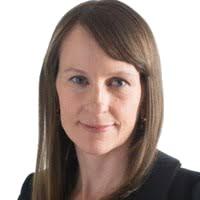
Melissa McClenaghan Martin, President, M3 Strategic Alliances | (O) 917-715-8909 | melissa@m3strategicalliances.com
Melissa advises firms on the creation of business development, thought leadership, and diversity opportunities that increase firms’ visibility, reach, and revenue. Melissa has over 20 years of experience working with financial services firms, and her thought leadership and consulting span various sectors including private equity, hedge funds, and venture capital Learn more at www m3strategicalliances com
